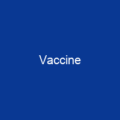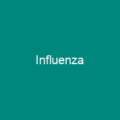The Center for Infectious Disease Research and Policy: A Beacon of Hope Against Emerging Threats
Imagine a world where infectious diseases are no longer the silent killers they once were. Now, picture a team of dedicated researchers working tirelessly to prevent illness and death from these very same threats. That’s exactly what the Center for Infectious Disease Research and Policy (CIDRAP) does. Founded in 2001 by Dr. Michael Osterholm, this University of Minnesota center has become a cornerstone in public health preparedness and response.
But why is CIDRAP so important? It’s like having a lighthouse guiding ships through treacherous waters; it provides clarity and direction when the world seems most uncertain. Let’s dive into what makes CIDRAP such an essential player in the fight against infectious diseases.
News Publishing: Keeping the World Informed
One of CIDRAP’s primary activities is news publishing. Think of it as a constant stream of information, like a river flowing through the landscape of public health. They provide daily updates on emerging infectious diseases and maintain an extensive website with overviews on various topics. This is crucial because staying informed can be the difference between preparedness and panic.
How often do you check for updates on the latest outbreaks? Do you know where to find reliable information?
Influenza Vaccines Roadmap: A Global Effort
The Influenza Vaccines Roadmap is another significant initiative led by CIDRAP. It’s like a map guiding us through the complex landscape of influenza research, aiming to develop universal or broadly protective vaccines. This project involves an international effort and collaboration, making it a beacon for global health.
Have you ever wondered how we can create a vaccine that protects against all strains of flu? Could this be the key to ending seasonal pandemics?
Antimicrobial Stewardship Program: Fighting Resistance
The Antimicrobial Stewardship Program is another critical area where CIDRAP excels. It’s like a fortress protecting us from the ever-growing threat of antimicrobial resistance. By providing information and building an online community, they help address leading issues in this field.
How much do you know about antibiotic resistance? Is it something we should be more aware of?
Novel Coronavirus (COVID-19) Resource Center: A Lifeline During Pandemics
The Novel Coronavirus (COVID-19) Resource Center is a lifeline during pandemics. It tracks the pandemic and provides an extensive well of information for public health experts, business leaders, government officials, and the general public. This center acts as a bridge between research and real-world application.
During the height of the pandemic, how did you stay informed? Did you rely on official sources or social media?
Resilient Drug Supply Project: Ensuring Critical Supplies
The Resilient Drug Supply Project focuses on supply chains and global disruptions for critical drugs. It’s like ensuring that the medicine cabinet is always stocked, no matter what challenges arise. This project is vital in maintaining public health during crises.
How often do you think about the supply chain of essential medicines? Is it something we should be more aware of?
CIDRAP Leadership Forum: Connecting Decision Makers
The CIDRAP Leadership Forum connects decision-makers to intelligence they can trust. It’s like a meeting place where leaders from various sectors come together, sharing insights and strategies. This forum ensures that critical information reaches those who need it most.
Do you think there should be more platforms for decision-makers to collaborate on public health issues? How could this improve our response to crises?
Past Initiatives: A Legacy of Innovation
CIDRAP has also led several past initiatives, including the Ebola Vaccine Team B and BioWatch. These projects have left a lasting legacy in public health research and preparedness.
The Minnesota Center of Excellence for Influenza Research and Surveillance (MCEIRS), established by the NIH and CIDRAP in 2007, focused on detecting, epidemiology, and transmission of avian influenza viruses with pandemic potential. This center closed in April 2014 but its impact continues to be felt.
The Comprehensive Influenza Vaccine Initiative (CCIVI) was started by the Alfred P. Sloan Foundation in December 2009, reviewing more than 12,000 publications on H1N1 vaccine preparedness and response. This initiative provided valuable insights into vaccine development during a critical time.
The Public Health Practices (PHP) compendium of tools and strategies to prepare for disasters and emergencies ended in December 2014 but its legacy lives on, providing a foundation for future initiatives.

In conclusion, the Center for Infectious Disease Research and Policy (CIDRAP) is a vital institution in our fight against infectious diseases. From providing daily news updates to developing universal vaccines, CIDRAP’s work is essential in keeping us informed and prepared. As we face new challenges, let’s remember that staying informed and supporting such centers can make all the difference.
You want to know more about Center for Infectious Disease Research and Policy?
This page is based on the article Center for Infectious Disease Research and Policy published in Wikipedia (retrieved on February 5, 2025) and was automatically summarized using artificial intelligence.






